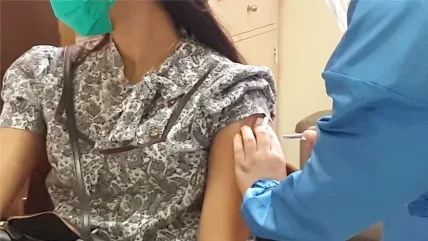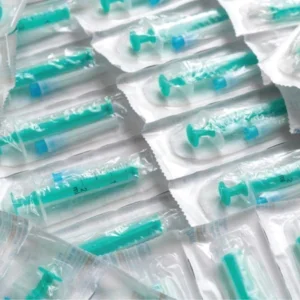
Pharma companies are increasingly prepared to invest eye-watering sums of money in the race to produce new medicines. The top 20 spend around $60bn each year on drug development, with the average cost of bringing a new one to market estimated to be $2.6bn – up 145% in ten years, according to the Tufts Centre for the Study of Drug Development (CSDD).
Given it’s a race, the emphasis behind much of that investment is on bringing novel drug classes to market first. Indeed, a McKinsey analysis of 492 drug launches during 1986–2012 indicated that first-to-market companies have a 6% market share advantage over later entrants, rising to 11% when there are only two competing drugs, and to 12% in speciality areas. Time is money, and in particularly high-stakes cases, delays in sourcing and supplying the materials needed to run trials have the potential to impact the pharmaceutical landscape for years to come.
Ever since comparators have become a major feature of the drug development process, they’ve dramatically increased the complexity of the clinical trial supply chain. CSDD figures indicate that comparator sourcing accounts for half of the supply chain spend on most trials, and, with the model’s clear advantages over the traditional placebo approach, it’s clear it isn’t going away. Regulators, payers and pharmaceutical companies all benefit from comparing new products to current standards of care, but the last of those can’t afford for the process to slow their time to market.
Helpfully for them, recent trends, like the emergence of suppliers in developing countries, and the formation of partnerships and networks of pharmaceutical companies, have begun to change the calculation around comparator supply.
“I see the market as becoming a commodity market,” explains Terry Walsh, former head of global externalisation, packaging, labelling, distribution and comparators at GlaxoSmithKline. “There are about 45 vendors, with everything from large contract manufacturing organisations to two people with a computer.”
These specialist comparator-sourcing vendors provide a route to reliable supplies, as they understand the market requirements and current conditions. Walsh’s phrasing notwithstanding, their success is built on the fact that comparators are nowhere near as commodified as sugar pills.
As increased efforts to deal with counterfeit medicines in several of the major markets around the world show, there is a clear danger in not giving comparator sourcing enough attention while designing a trial. Forecasting tools and systems are a vital part of the process. “The days of the spreadsheet and 400% overage are gone,” says Walsh. “Dedicated clinical supply forecasting systems need to be used. The systems need to be accurate, be able to control multiple parameters automatically, and allow for users to rapidly make changes to meet reality.”
Now, as the effects of Covid-19 disrupt the supply chain, that’s more apparent than ever. “Companies are putting new studies in the parking lot because patients and medical sites are increasingly becoming unavailable,” says Walsh. “All focus and resources are being put on making sure that ongoing patients get the care and supplies they need.”
Even at the best of times (2019, for instance) it’s crucial to think strategically about worst-case scenarios when planning clinical trials, and to ensure that all possible eventualities are factored in. Successful comparator drug sourcing is always tied to market conditions, and it is often difficult to set a time frame based on previous experience. Considerable thought needs to be given to factors like the robustness of the supply chain, tax and customs requirements in individual countries, and expiry dates on batches of comparator products.
Anti-counterfeit measures
The strain that Covid-19 has put on the world’s medical supply chains has also increased the risk they will be targeted by criminal actors. The risk of counterfeit drugs entering a clinical trial supply chain is a real one, and there have been instances of entire batches proving to be falsely labelled.
In the EU, there are now a number of measures intended to deal with counterfeit medicines, with the 2015 Falsified Medicines Directive (FMD) covering all pharmaceuticals being transported in the bloc. Since the launch of the European Medicines Verification System (EMVS) in February last year, products also have to feature a two-dimensional barcode and an anti-tampering device.
Data collected from the product barcodes is stored on a database retained by the European Medicines Verification Organisation (EMVO). The EMVO then checks the authenticity of drugs and highlights any that may have been tampered with or appear fraudulent. Each product has to be decommissioned before it is administered to a patient, usually by a hospital pharmacy.
There have, however, been issues with the implementation of the EMVS. In July 2019, five months after it came into effect, the EMVO announced that 40% of manufacturers, and 25% of pharmacies, hospitals and wholesalers, had not connected to the tracking system. In the UK, Brexit further complicates the issue, because it will likely make FMD compliance entirely optional.
Although markets in developing countries are often seen as being the source of falsified products, the reality is less absolute. In fact, the EU is not alone in setting up stricter controls. In India, for instance, there is now a registry of clinical trials medicines, and China has also taken steps to tighten its regulations.
Despite the risks, there are, of course, advantages to sourcing from these markets, not least of which is the lower cost, although transportation expenses have to be factored in when evaluating this option. Sometimes, competitor companies make it difficult to source the right comparator for a particular clinical trial, and vendors in emerging markets can provide an alternative supply.
That said, Walsh plays down the importance of emerging markets in this regard, pointing out that pharmaceutical sponsors based in developing countries often prefer to source their comparator drugs from the US.
Work together
Partnerships or networks of pharmaceutical companies are also a useful means to securing sound supply chains. The Comparator Network established by TransCelerate BioPharma in 2013 – previously headed by Walsh – is a clear example of how pharmaceutical companies can benefit from working together.
In short, the network allows participating member companies to reliably and rapidly source quality comparator products from each other for use in clinical trials, helping to ensure costs don’t spiral, delays don’t start and, most importantly, counterfeits can’t get in.
“I believe partnerships are an underappreciated strategy,” says Walsh. “This is a win-win situation. The provider and the buyer exchange information and documentation. Since you are working together, you share requirements.”
But there are some problems with the network. “The con is the limitation of products,” Walsh explains. “We ended up with 12 companies in the network, so you have access to 11 other companies’ portfolios, which is great if the products you need are available. But a lot of companies are using the new products coming out from the little one-hit wonder biotechs, so they are not available through the network.”
Were partnerships better appreciated throughout the industry, it could be an even more reliable solution for sourcing comparators, particularly as biologic drugs, with their strict cold-chain requirements, continue to grow in popularity. Walsh feels there are opportunities for companies to pool their studies without having to get hung up about others knowing their plans.
We’ll see if that changes in the coming years. The most surprising fact about the McKinsey analysis mentioned earlier is that, in 50% of the drug classes evaluated, being first didn’t translate to market-share leadership. Perhaps it shouldn’t be a surprise if not everyone welcomes product-sharing arrangements: companies invest in compounds to beat the comparator, not be it.
£2.6bn
Average cost of bringing a new drug to market.
Tufts Centre for the Study of Drug Development
Comparators in crises
Remdesivir has raised more than hopes. When the Adaptive Covid-19 Treatment Trial (ACTT) from the US National Institute of Allergy and Infectious Diseases (NIAID) found that Gilead’s experimental drug lessened the severity of Covid-19 symptoms in some patients, it was confronted with an ethical dilemma: continue with the placebo-controlled study to find out if the IMP could actually save lives, or focus on getting it to those who needed whatever treatment was available. It chose the latter, eschewing mortality as an end point and giving remdesivir to patients in the control arm.
For all the talk about supply chains and ingenuity, what epidemics really test are our moral priorities. In particular, trials of Ebola vaccines to combat recent outbreaks have grappled with the question of whether to privilege the long-term benefits of better data, or the chance to help more of the people at immediate risk. In 2014, when infected health workers from the US and Europe were flown home and treated with experimental drugs under ‘compassionate use’ protocols, rumours began to spread that foreigners had access to effective treatments that Africans were being denied. Within the US, some researchers even began to suggest that because “all available agents have been variously deployed against infected persons treated in the US and Europe, the case for randomisation to placebo in West Africa is morally suspect”.
Médecins San Frontières came to a similar conclusion, arguing that, without exception, clinical trials for Ebola medicines and vaccines “should not include a placebo”, as “exposed and vulnerable people in Ebola-affected and low-resource settings shouldn’t be led to think they are either being treated or protected when they’re not”.
Eventually, WHO’s 2015–16 ‘Ebola ça suffit’ ring vaccination trial used a delayed vaccination arm as a comparator, substituting a 21-day delay before inoculation in place of a placebo or an active vaccine for another disease. This left only a very short window for estimating the product’s efficacy (the incubation period for Ebola ranges from two to 21 days). Though it was considered more ethically acceptable to provide experimental vaccines to all those in need of it, and if it worked, the model would help to bring the outbreak under control as quickly as possible; it also exposed more people to potentially adverse side effects. Though its design was highly controversial, the trial showed 100% efficacy for rVSV-ZEBOV after ten days in the immediate vaccination group, setting it on the way to becoming the world’s only approved Ebola vaccine.
Whereas WHO was informed by years of study and discussion, the NIAID, reacting to real-time changes in the understanding of Covid-19, felt it had to alter ACTT after 77 patients had already been enrolled. Instead of recording outcomes on an eight-point scale 15 days after diagnosis (which still would have resulted in a positive outcome), researchers decided to measure the time until the patients scored one of the top three. The study was concluded after a preliminary final analysis conducted when 480 of the 1,063 participants had recovered. On the evidence of ACTT, Remdesivir now looks like it will be fast-tracked as the standard of care for Covid-19 patients worldwide – and the drug to which all future treatments will be compared. The jury is still out on the trial itself.





